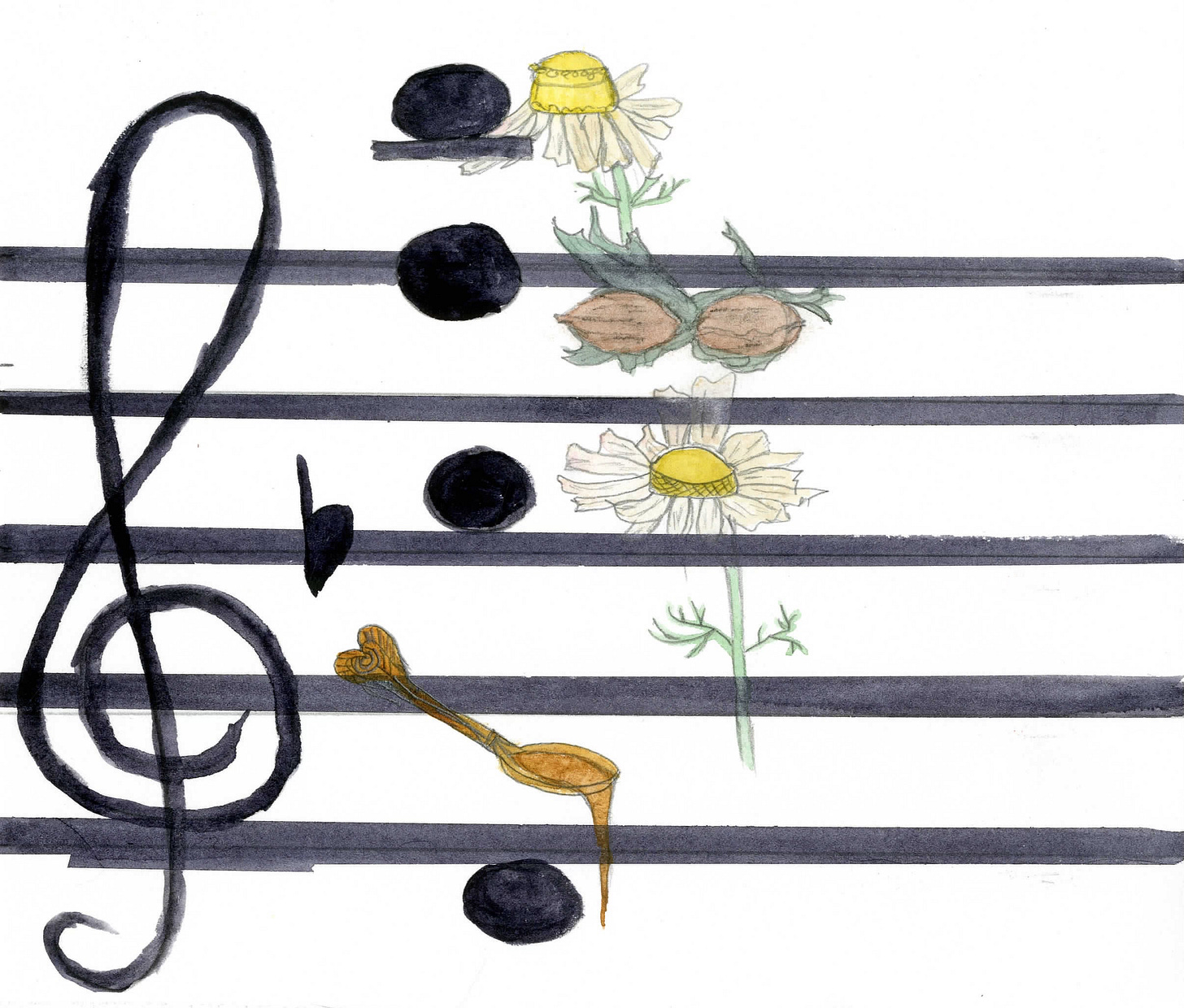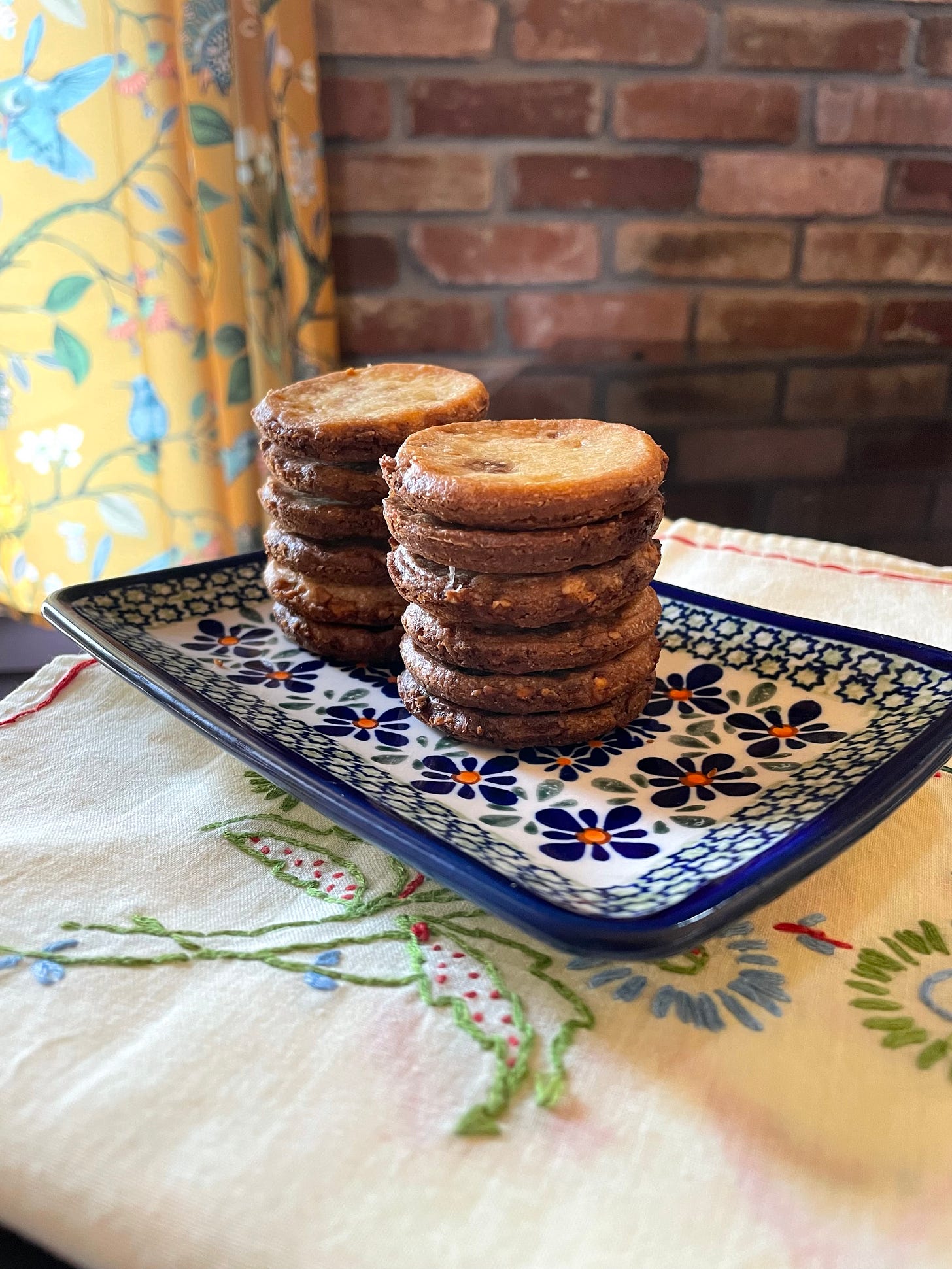Flavour Chords
Bethany Dixon on the interconnectedness of music and cooking, plus recipes for chamomile, hazelnut & smoked honey sablés and bay leaf & clementine hot chocolate.
Good morning, and welcome to Vittles! Today, musician Bethany Dixon writes about the innate links between food and music, and shares recipes inspired by – and illustrations of – ‘flavour chords’ that she has fixated on.
Issue 2 of our print magazine, on the theme of Bad Foods, is still available for pre-order for a few more days. If you order before 1 December, you can get the magazine for just £18 (RRP £20), with an extra discount for paid subscribers (see the original email for details). Pre-order here.
Most people can point to a colour and say, ‘That’s blue.’ They don’t have to think about it; they just see it and immediately it registers as blue. In much the same way, when I hear a note, I can point to it in the air and say, ‘That’s a B.’ And when I taste something – a fruit, or herb, or spice – it sounds to me almost exactly like a note in the air. When I think about flavours in combination, I hear them as if hearing a chord, each note coming together to form a harmonic unit. Whether it’s a form of synaesthesia or just a weaving together of my oldest sensory threads, I’m not certain.
I can become fixated on turning these flavour notes into music in the shape of recipes, which I call ‘flavour chords’, and have spent a decade or more trying to conjure the sound of a specific sonic memory in the kitchen. I get similarly obsessed with certain phrases in music, and have spent months and sometimes years learning a long and thorny piece just so I can play that one incandescent phrase. The sensory experience of both taste and sound is brief, lasting only seconds. Yet memories of these sensations can have a resonance that continues sounding for years, and which for me can provide continued creative sustenance.
Here I’m sharing flavour chords for chamomile, hazelnut, and smoked honey sablés, and for a bay leaf, ginger, and clementine hot chocolate, centred around two flavour obsessions – chamomile flowers and bay leaves, respectively – and the notes that fibrillate in concert. I’m also sharing soundscapes to accompany tasting them.
Chamomile, Hazelnut, and Smoked Honey Sablés
I return to Lea Desandre and Thomas Dunford’s performance of Charpentier’s ‘Sans Frayeur Dans Ce Bois’ again and again. I am a sucker for a basso continuo, and Dunford’s lute opens with a bouncy, hopeful octave leap, then rambles and climbs down and around, for all the world like a fearless wanderer into the woods. I still don’t know how to precisely describe Desandre’s voice, but it pours in like cool water and fills every part of the music.
Charpentier’s piece is gentle and sweet, but its lyrics are actually quite strange: a young woman walking alone in the woods (a rarity in any myth or folktale, where amorous men are sure to be lurking) encounters Thyrsis, the personification of the pastoral, but is ‘unmoved’ by the experience. The young woman’s refusal to engage in the encounter as romantic, or to show fear, disrupts an otherwise predictable pastoral scene.
In the kitchen, the gentle disruption of the expected is where I most like to wander. For me, the flavour chord of these sablés – based on Dorie Greenspan’s sablé dough – captures the essence of the piece. The chamomile is gentle and sweet, but not simple or saccharine – it’s a delicate persistence. The hazelnuts taste like a sun-warmed forest, while the smoked honey is the low sweetness of the basso continuo, scaffolding the rest of the music.
Note: you will need a stand mixer for this recipe.
Beyond the paywall: the sablé recipe, plus a recipe for bay leaf, ginger and clementine hot chocolate.



